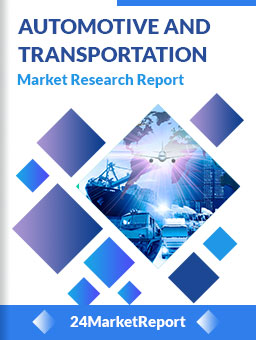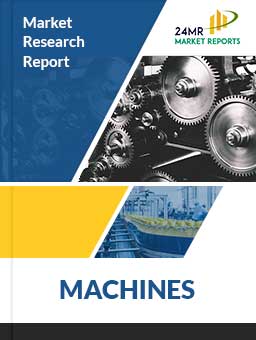
COMPANIES COVERED
SWARCODownload FREE Report Sample
Download Free sampleLED Traffic Lights represent a technological advancement in traffic control, using high-brightness light-emitting diodes (LEDs) to ensure clear and energy-efficient signaling. Compared to traditional incandescent traffic signals, LED lights consume less power, generate less heat, and offer significantly longer operational life. Their durability and visibility, even in adverse weather conditions, make them an ideal choice for modern traffic management systems worldwide.
These LED clusters consist of hundreds of individual light-emitting diodes, providing consistent and vibrant color output for red, yellow (amber), and green signals. They are widely implemented in urban and rural traffic networks for roads, highways, railway crossings, and various pedestrian systems. Additionally, the use of smart sensors and integration with connected traffic systems make LED traffic lights integral to the broader smart city framework.
Market Size
As of 2024, Global LED Traffic Light market size is estimated at USD 1,284 million and is projected to grow to USD 1,811.78 million by 2032. This represents a compound annual growth rate (CAGR) of 3.90% during the forecast period.
This growth trajectory indicates a healthy demand for energy-efficient and sustainable traffic solutions across the globe.
North America alone, the market size in 2024 was estimated at USD 357.32 million, with a projected CAGR of 3.34% from 2025 to 2032. This expansion is fueled by increasing infrastructure upgrades, the push toward smart city initiatives, and enhanced public safety requirements.
To know more about market statistics, Download a FREE Sample copy
Global efforts to reduce carbon footprints and dependence on conventional power grids further contribute to the adoption of LED-based traffic systems. Moreover, governments and municipalities are increasingly investing in sustainable traffic management infrastructure, which is expected to continue bolstering the market.
Market Dynamics (Drivers, Restraints, Opportunities, and Challenges)
Drivers
Energy Efficiency: LED lights consume up to 80% less power compared to incandescent lights, leading to significant cost savings.
Longer Lifespan: LEDs last up to 100,000 hours, reducing replacement frequency and maintenance costs.
Smart City Development: Rising investment in smart transportation systems is accelerating the adoption of LED traffic lights integrated with IoT and AI.
Government Initiatives: Incentives and regulations encouraging the use of energy-efficient public lighting systems drive market growth.
Restraints
High Initial Costs: Installation costs of LED traffic systems can be higher than traditional lights, which may deter small municipalities.
Technical Integration Issues: Integrating LED systems with older infrastructure or legacy traffic management platforms can pose challenges.
Opportunities
Emerging Economies: Rapid urbanization in Asia-Pacific and Africa offers large-scale opportunities for traffic system upgrades.
Product Innovation: The integration of adaptive traffic control, real-time monitoring, and solar-powered systems provides new avenues for growth.
Challenges
Standardization and Compliance: Lack of uniform technical standards across regions can hinder large-scale deployment.
Cybersecurity Risks: As systems become connected, vulnerability to hacking and data breaches becomes a concern.
Regional Analysis
North America
Europe
Europe’s market is driven by environmental sustainability goals and energy efficiency regulations. Countries like Germany, the UK, and France are proactively replacing old traffic lights with LED versions.
Asia-Pacific
South America
Middle East and Africa
Competitor Analysis (in brief)
The global LED Traffic Light market is moderately consolidated, with key players focused on innovation, regional expansion, and strategic partnerships. Companies such as SWARCO, Dialight, and Leotek dominate due to their wide product portfolios, robust supply chains, and ongoing R&D initiatives. Local players in emerging markets also contribute significantly through cost-effective and customized solutions.
Key strategies include:
Introduction of solar-powered traffic signals.
Development of modular, easily maintainable systems.
Integration of wireless communication and adaptive signal control features.
Global LED Traffic Light Market: Market Segmentation Analysis
LED Traffic Light Market provides a deep insight into the global LED Traffic Light market, covering all its essential aspects. This ranges from a macro overview of the market to micro details of the market size, competitive landscape, development trend, niche market, key market drivers and challenges, SWOT analysis, value chain analysis, etc.
The analysis helps the reader to shape the competition within the industries and strategies for the competitive environment to enhance the potential profit. Furthermore, it provides a simple framework for evaluating and assessing the position of the business organization. The report structure also focuses on the competitive landscape of the Global LED Traffic Light Market. LED Traffic Light Market introduces in detail the market share, market performance, product situation, operation situation, etc., of the main players, which helps the readers in the industry to identify the main competitors and deeply understand the competition pattern of the market.
In a word, LED Traffic Light Market is a must-read for industry players, investors, researchers, consultants, business strategists, and all those who have any kind of stake or are planning to foray into the LED Traffic Light market in any manner.
Market Segmentation (by Application)
Market Segmentation (by Type)
Key Company
Geographic Segmentation
FAQ
What is the current market size of the LED Traffic Light Market?
Which are the key companies operating in the LED Traffic Light Market?
What are the key growth drivers in the LED Traffic Light Market?
Which regions dominate the LED Traffic Light Market?
What are the emerging trends in the LED Traffic Light Market?
Key Benefits of This Market Research:
Key Reasons to Buy this Report:
Customization of the Report
Chapter Outline

Speak to our Custom Research Team and get the Custom Research in a budget
Custom ResearchFrequently Asked Questions ?
A license granted to one user. Rules or conditions might be applied for e.g. the use of electric files (PDFs) or printings, depending on product.
A license granted to multiple users.
A license granted to a single business site/establishment.
A license granted to all employees within organisation access to the product.
Upto Working 24 to 48 hrs
Upto 72 hrs max - Weekends and Public Holidays
Online Payments with PayPal and CCavenue
Wire Transfer/Bank Transfer
Hard Copy




 Industry Market Size
Industry Market Size SWOT Analysis
SWOT Analysis Industry Major Players
Industry Major Players Revenue Forecasts
Revenue Forecasts Historical and Forecast Growth
Historical and Forecast Growth Profitability Analysis
Profitability Analysis
























